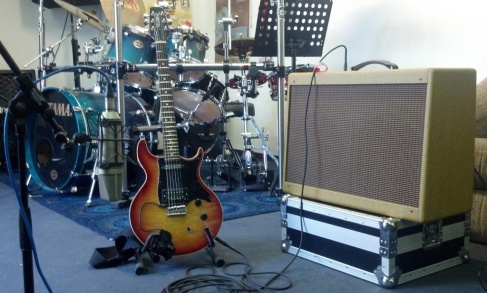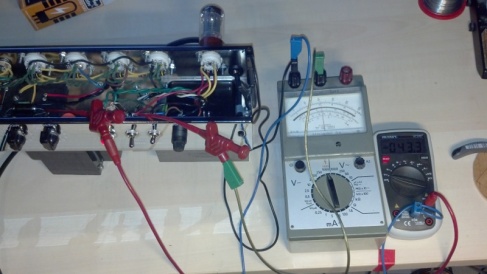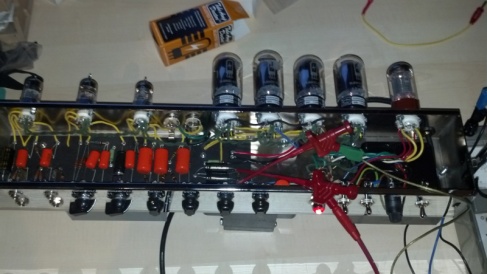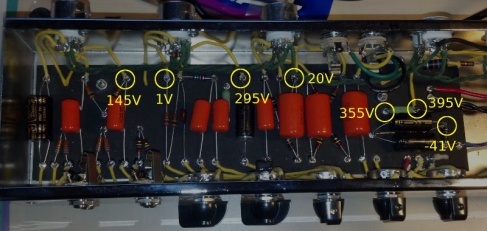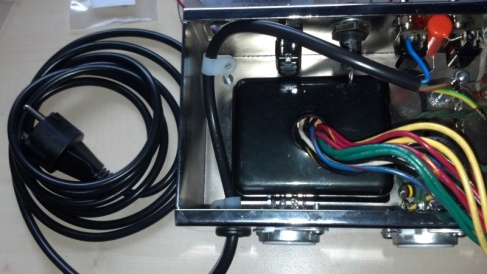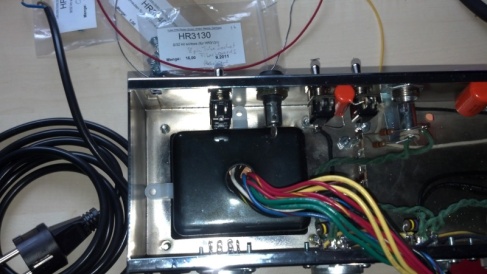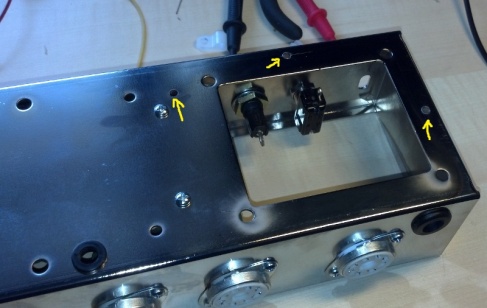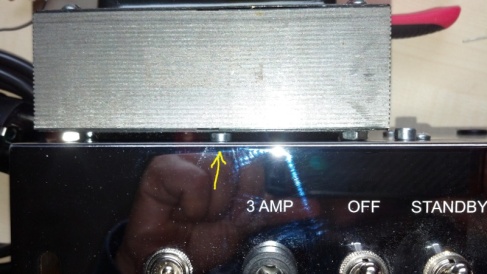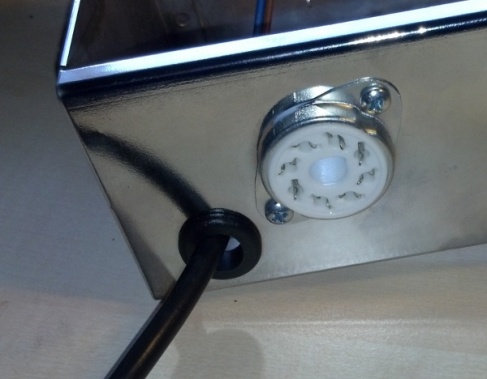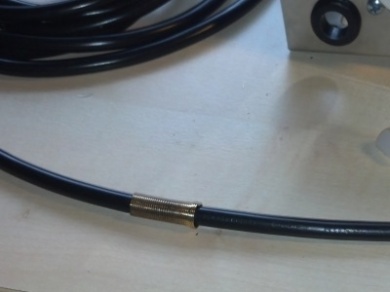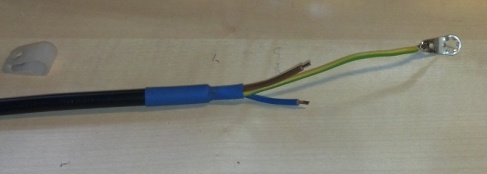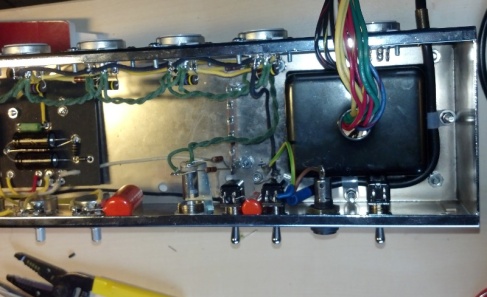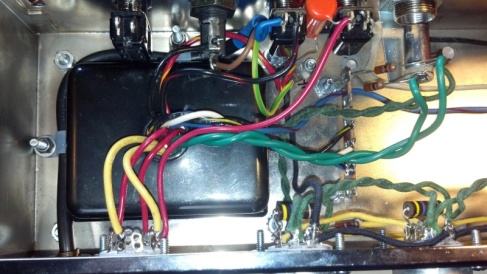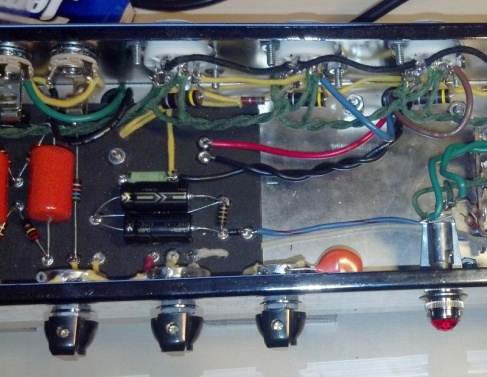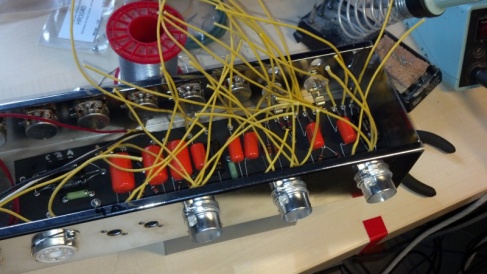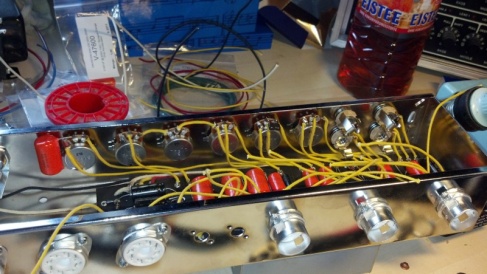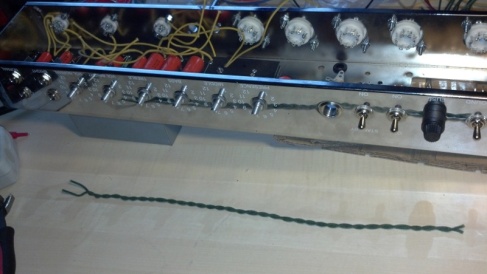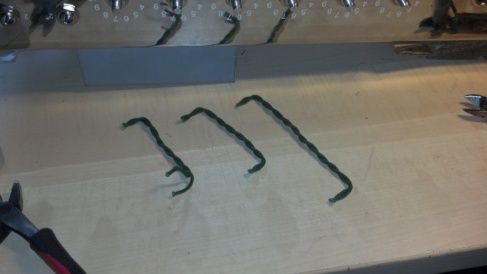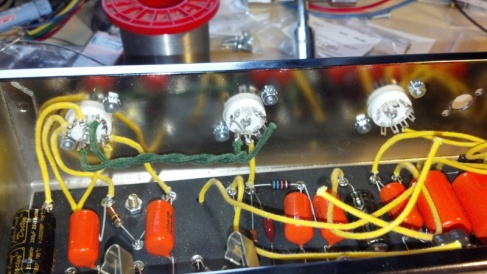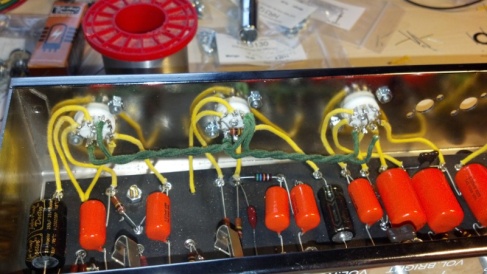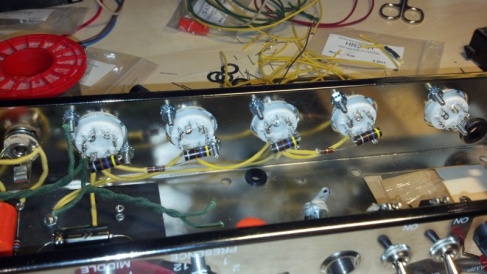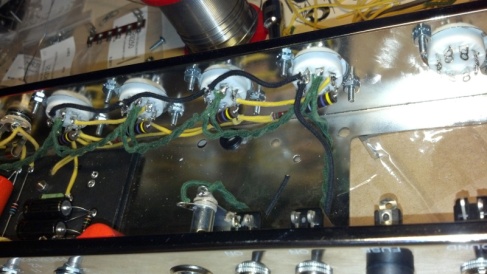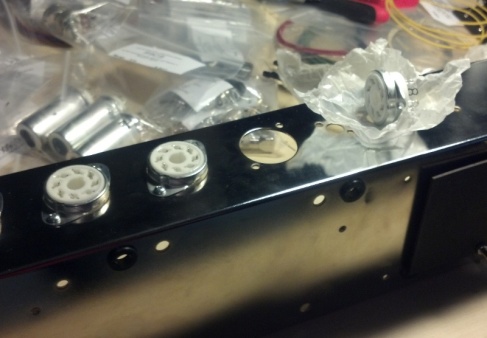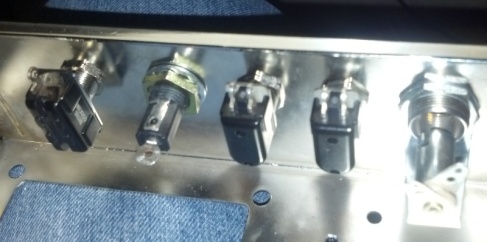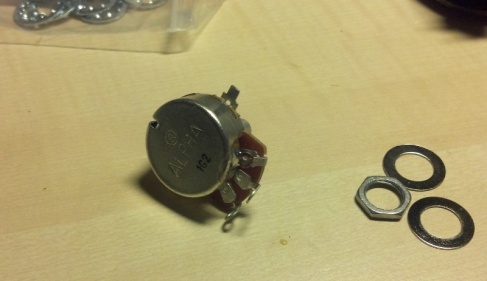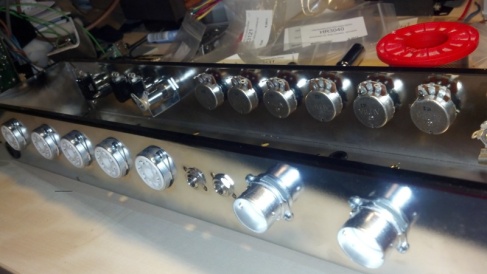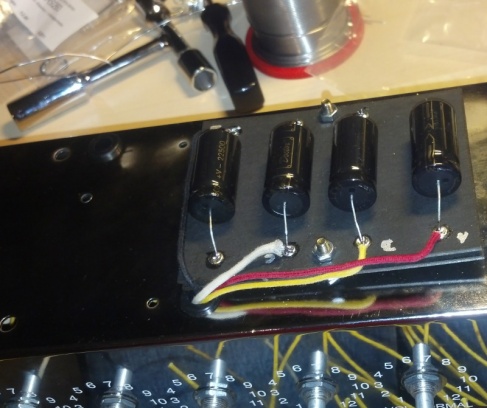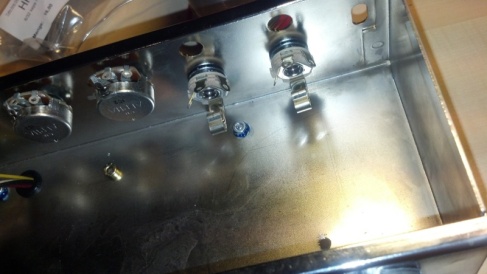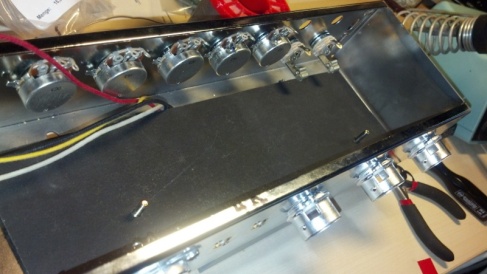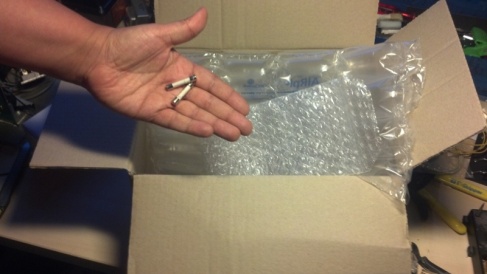Finally the time has come to power the assembled amp up. What can I say? I´m really delighted by the clean tones. It´s not like later Blackface Fender sounds, but has a kind of wooden quality to it. I guess this comes mostly from the enclosure and the speakers. The overall sound is mostly bright and gets raspy once hit hard.
The guitar I used in the following sound samples is a ´81 Hamer Prototype, which is an all mahogany setneck guitar with a single coil shaped humbucker (OBL) at the neck.
This is a recording from the situation you see in the picture: Guitar straight into the amp, bright channel, no effects, U87Ai a meter away from the amp and also straight through a clean mic pre into the ADC. The sound is beautifully threedimensional and organic.
Then I added a bit of reverb and quite a bit of delay coming from my old Boss GT-6 to the amps sound.
The amp doesn´t stay clean very long. With the pickups in this guitar it begins to distort at around 3-4 on the volume knob´s scale. While a little overdrive creeping in when you hit the strings hard sound kind of charming to me, I´m not sure whether I really like the overdrive sound. The sizzling highs sit somewhere between 8-10kHz and don´t sound good to me. I used the “normal” channel for that and a SM57 microphone to make the following sample bearable:
Here are my settings on the amp:
I´m currently thinking about modifying the amp to stay more clean. 4 6L6CG should be able to be a lot louder without distorting. I have not yet tried to explore it further, but I guess the distortion doesn´t come from the power tubes at all, but one of the preamp or the phase inverter stage.
Any suggestions?
